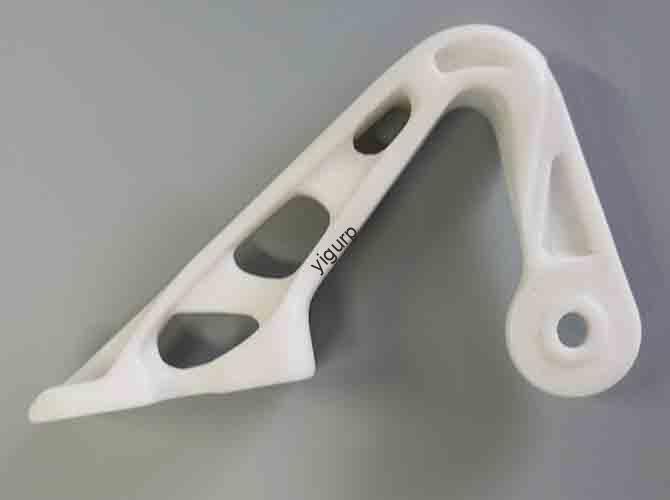Im Zeitalter der intelligenten Fertigung, 3D Hochpräziser Druck hat neu definiert, wie Branchen komplexe Strukturen schaffen, hochwertige Komponenten. Im Gegensatz zu herkömmlichen subtraktiven Methoden, die Material wegschneiden, Diese Technologie baut Objekte Schicht für Schicht auf und eröffnet so Möglichkeiten für komplizierte Designs, schnellere Produktion, und maßgeschneiderte Lösungen. Dieser Leitfaden befasst sich mit seinen Grundprinzipien, Schlüsselvorteile, Anwendungen in der Praxis, and why it’s a critical tool for forward-thinking businesses.
1. Core Principles of 3D High-Precision Printing
Im Herzen, 3D Hochpräziser Druck relies on a “layer-by-layer deposition” Verfahren, driven by digital models (Z.B., CAD -Dateien). This approach eliminates the limitations of traditional manufacturing, where complex shapes often require expensive molds or multiple machining steps. Below is a breakdown of how it works, plus a comparison to subtractive methods.
1.1 Schritt-für-Schritt-Workflow
- Digital Modeling: Create a detailed 3D model using software (Z.B., Solidworks, Fusion 360). The model is sliced into thousands of thin 2D layers (typically 10–100 microns thick).
- Materialvorbereitung: Load specialized materials (Kunststoff, Metalle, Keramik) in den 3D -Drucker. Each material is optimized for precision—e.g., metal powders for aerospace parts, biocompatible resins for medical devices.
- Schicht-für-Schicht-Druck: The printer deposits or cures one layer at a time. Zum Beispiel:
- Powder-based systems (Z.B., Slm) use lasers to fuse metal powder.
- Resin-based systems (Z.B., DLP) use light to harden photosensitive resin.
- Nachbearbeitung: Entfernen Sie das Teil, Überschüssiges Material sauber, and apply finishing steps (Z.B., heat treatment for metals, polishing for plastics) to enhance strength and precision.
1.2 3D High-Precision Printing vs. Traditional Subtractive Manufacturing
| Besonderheit | 3D High-Precision Printing | Traditional Subtractive Manufacturing (Z.B., CNC -Bearbeitung) |
| Materialverbrauch | Minimaler Abfall (verwendet nur das erforderliche Material) | Hoher Abfall (carves away up to 70% Rohstoff) |
| Complexity Support | Griff komplizierte Geometrien (Z.B., interne Kanäle) | Struggles with complex shapes (erfordert mehrere Setups) |
| Vorlaufzeit | Schnell (prototypes in hours/days) | Langsam (molds/tooling take weeks/months) |
| Anpassung | Einfach (adjust digital model only) | Schwierig (requires new tooling for each design) |
2. Key Advantages of 3D High-Precision Printing
What makes this technology a game-changer? Its four core strengths address critical pain points for industries like aerospace, Gesundheitspflege, and automotive—from reducing costs to enabling innovation.
2.1 Vorteilsaufschlüsselung (mit Daten)
| Vorteil | Einzelheiten & Wirkliche Auswirkungen |
| Micron-Level Accuracy | Achieves precision as low as 5–10 microns (0.005–0.01 mm)—critical for medical implants and aerospace components. Zum Beispiel, dental crowns printed with this precision fit patients’ teeth perfectly. |
| Unerreichte Designfreiheit | No shape restrictions: Print parts with internal lattices, hohle Strukturen, or organic curves. This has enabled lighter aerospace parts (reducing fuel costs by 15–20%) and personalized medical devices. |
| Diverse Material Support | Works with over 100+ Materialien, einschließlich: – Metalle: Titan (für Implantate), Aluminium (Für die Luft- und Raumfahrt). – Kunststoff: ABS (Für Automobilteile), Biokompatible Harze (für chirurgische Werkzeuge). – Keramik: Zirkonia (for dental crowns), Alumina (for industrial sensors). |
| Shortened Production Cycles | Cuts lead times by 50–80% compared to traditional methods. Zum Beispiel, automotive prototypes that once took 6 weeks to make can now be printed in 2–3 days—accelerating R&D. |
3. Real-World Applications of 3D High-Precision Printing
This technology isn’t just innovative—it’s practical. Im Folgenden finden Sie die wirkungsvollsten Anwendungsfälle, with industry-specific examples.
3.1 Luft- und Raumfahrtindustrie
- Leichtbaukomponenten: Prints titanium or aluminum parts (Z.B., Motorhalterungen, Kraftstoffdüsen) that are 30–50% lighter than traditional parts. Dies reduziert das Flugzeuggewicht, lowering fuel consumption by 10–15%.
- Complex Engine Parts: Creates turbine blades with internal cooling channels—impossible with CNC machining. These blades improve engine efficiency by 20%.
3.2 Healthcare Industry
- Custom Medical Devices: Produces personalized prostheses (Z.B., artificial hips) and orthopedic stents. Using patient scans, parts fit perfectly—reducing post-surgery complications by 40%.
- Surgical Tools: Prints high-precision tools (Z.B., biopsy forceps) with 10-micron accuracy. These tools are more durable than plastic alternatives and cost 30% weniger zu produzieren.
3.3 Automobilindustrie
- Schnelles Prototyping: Tests new designs (Z.B., Dashboard -Komponenten, Türgriffe) in Tagen statt Wochen. This speeds up new car launches by 3–6 months.
- Customized Parts: Makes limited-edition parts (Z.B., racing spoilers) for high-end vehicles. No tooling is needed—saving manufacturers $50,000+ pro Design.
Yigu Technology’s Perspective on 3D High-Precision Printing
Bei Yigu Technology, wir sehen 3D Hochpräziser Druck as a catalyst for industrial transformation. Its ability to balance accuracy, Geschwindigkeit, and material diversity helps our clients solve unique challenges—from creating lightweight aerospace parts to personalized medical devices. We’ve integrated this technology into our solutions to cut client lead times by 60% and reduce material waste by 50%. Wenn Materialien und Drucker voranschreiten, we expect it to become the standard for high-value manufacturing—especially in sectors where precision and customization are non-negotiable.
FAQ: Common Questions About 3D High-Precision Printing
- Q: Is 3D high-precision printing only for small parts?
A: NEIN. While it excels at small, detaillierte Teile, industrial printers can produce large components (Z.B., 1m x 1m aerospace panels) with the same precision. The key is choosing the right printer and material.
- Q: Are 3D-printed high-precision parts as strong as traditionally made parts?
A: Yes—often stronger. Zum Beispiel, metal parts printed via SLM have a 99.9% Dichte (same as forged metal) and can withstand high temperatures. Nachbearbeitung (Z.B., Wärmebehandlung) further boosts strength.
- Q: How much does a 3D high-precision printer cost?
A: Prices vary by size and capability: – Desktop models (for small plastics): \(5,000- )50,000. – Industrial metal printers (für Luft- und Raumfahrt/Medizin): \(200,000- )2 Million. Die Kosten werden durch geringeren Materialabfall und kürzere Durchlaufzeiten ausgeglichen.
